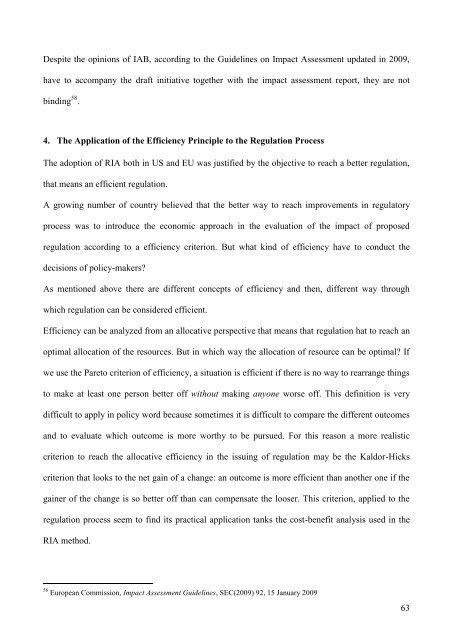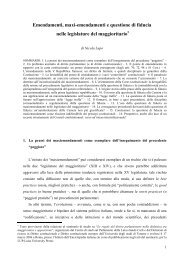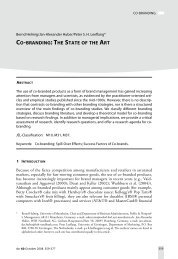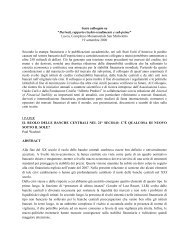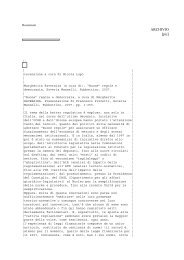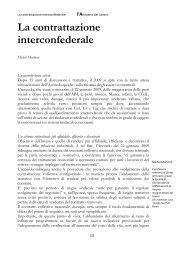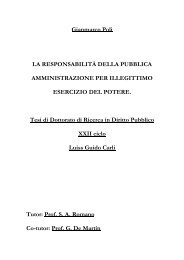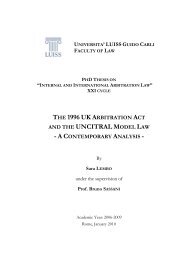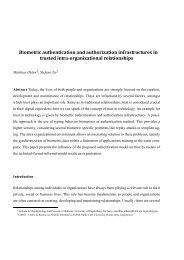The rebates, which consist in granting a lump sum discount to the ...
The rebates, which consist in granting a lump sum discount to the ...
The rebates, which consist in granting a lump sum discount to the ...
You also want an ePaper? Increase the reach of your titles
YUMPU automatically turns print PDFs into web optimized ePapers that Google loves.
Despite <strong>the</strong> op<strong>in</strong>ions of IAB, accord<strong>in</strong>g <strong>to</strong> <strong>the</strong> Guidel<strong>in</strong>es on Impact Assessment updated <strong>in</strong> 2009,have <strong>to</strong> accompany <strong>the</strong> draft <strong>in</strong>itiative <strong>to</strong>ge<strong>the</strong>r with <strong>the</strong> impact assessment report, <strong>the</strong>y are notb<strong>in</strong>d<strong>in</strong>g 58 .4. <strong>The</strong> Application of <strong>the</strong> Efficiency Pr<strong>in</strong>ciple <strong>to</strong> <strong>the</strong> Regulation Process<strong>The</strong> adoption of RIA both <strong>in</strong> US and EU was justified by <strong>the</strong> objective <strong>to</strong> reach a better regulation,that means an efficient regulation.A grow<strong>in</strong>g number of country believed that <strong>the</strong> better way <strong>to</strong> reach improvements <strong>in</strong> regula<strong>to</strong>ryprocess was <strong>to</strong> <strong>in</strong>troduce <strong>the</strong> economic approach <strong>in</strong> <strong>the</strong> evaluation of <strong>the</strong> impact of proposedregulation accord<strong>in</strong>g <strong>to</strong> a efficiency criterion. But what k<strong>in</strong>d of efficiency have <strong>to</strong> conduct <strong>the</strong>decisions of policy-makers?As mentioned above <strong>the</strong>re are different concepts of efficiency and <strong>the</strong>n, different way through<strong>which</strong> regulation can be considered efficient.Efficiency can be analyzed from an allocative perspective that means that regulation hat <strong>to</strong> reach anoptimal allocation of <strong>the</strong> resources. But <strong>in</strong> <strong>which</strong> way <strong>the</strong> allocation of resource can be optimal? Ifwe use <strong>the</strong> Pare<strong>to</strong> criterion of efficiency, a situation is efficient if <strong>the</strong>re is no way <strong>to</strong> rearrange th<strong>in</strong>gs<strong>to</strong> make at least one person better off without mak<strong>in</strong>g anyone worse off. This def<strong>in</strong>ition is verydifficult <strong>to</strong> apply <strong>in</strong> policy word because sometimes it is difficult <strong>to</strong> compare <strong>the</strong> different outcomesand <strong>to</strong> evaluate <strong>which</strong> outcome is more worthy <strong>to</strong> be pursued. For this reason a more realisticcriterion <strong>to</strong> reach <strong>the</strong> allocative efficiency <strong>in</strong> <strong>the</strong> issu<strong>in</strong>g of regulation may be <strong>the</strong> Kaldor-Hickscriterion that looks <strong>to</strong> <strong>the</strong> net ga<strong>in</strong> of a change: an outcome is more efficient than ano<strong>the</strong>r one if <strong>the</strong>ga<strong>in</strong>er of <strong>the</strong> change is so better off than can compensate <strong>the</strong> looser. This criterion, applied <strong>to</strong> <strong>the</strong>regulation process seem <strong>to</strong> f<strong>in</strong>d its practical application tanks <strong>the</strong> cost-benefit analysis used <strong>in</strong> <strong>the</strong>RIA method.58 European Commission, Impact Assessment Guidel<strong>in</strong>es, SEC(2009) 92, 15 January 200963


